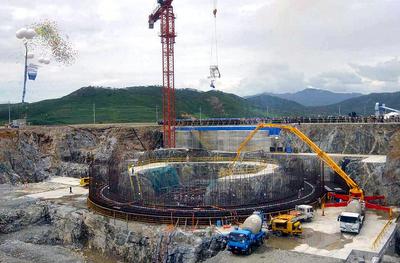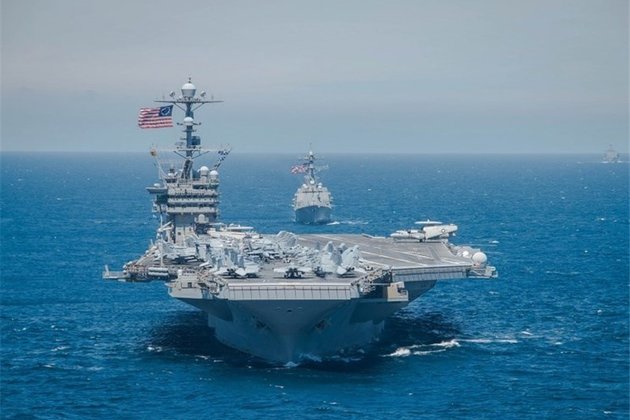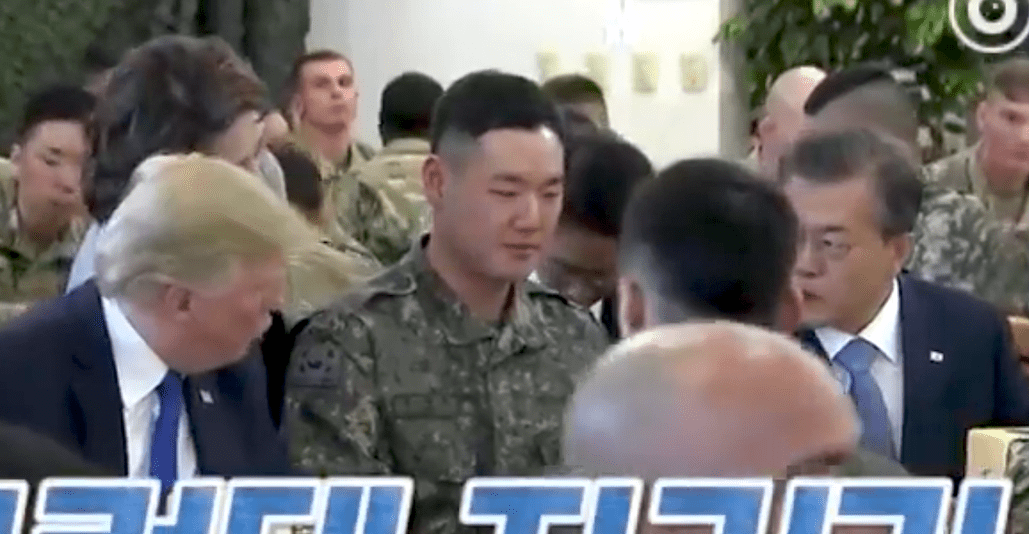Politics
Fukushima’s implications for Korea’s nuclear dilemmas
Author: Peter Hayes, Nautilus Institute and RMIT In the wake of the Fukushima nuclear disaster in Japan, Korea — a tiny nation festooned with reactors in the South and one small light water reactor under construction in the North — has some serious thinking to do on the nuclear front. The South’s ambitious reactor expansion plan no longer seems viable and the safe storage of spent fuel rods must also be reconsidered. In the post-Fukushima world , three new inexorable political pressures on nuclear decision makers have come to the fore. The first is to accelerate direct disposal of nuclear waste while increasing underground interim spent fuel storage capacity — the latter necessary to ensure that aerial bombardment of a spent fuel pond does not result in a massive radiological release, rendering the surrounding land uninhabitable for thousands of years. The rapidly emerging deep borehole technology promises a realistic solution to this problem in the medium-term, but further investigation is needed. There appear to be suitable geological formations in both North and South Korea for placing high level nuclear wastes permanently into holes drilled three to five kilometres deep where the material will remain securely sequestered for millions of years. But to properly exploit this option North Korea cannot remain forever an enemy of the South. The second trend is to look for new places to site reactors. The natural solution is to site them in North Korea and build a truly integrated, smart national grid that covers the whole of the Peninsula (and ties to the Russian, Chinese, Mongolian and Japanese grids). Thus, if the South wants safe siting of nuclear power, it needs to hasten the rapprochement with North Korea. The third trend is to rethink the strategy of increasing reliance on nuclear power, which reduces technological diversity in the power sector and makes it vulnerable to severe technological flaws that can shut down many reactors at the same time. The introduction of a smart grid in South Korea, with a much stronger emphasis on renewable energy and efficiency, combined with decreasing reliance on nuclear power as a fraction of electricity supply, appears to be a sensible strategy. Such a strategy would reduce the risk of radiological hazard arising from state and non-state actor attacks on fuel cycle facilities in the South — a real hazard due to the continuing risk of war in the Peninsula. The only places to find new sites for reactors are in the North or underground in the South. But it is hard to imagine Seoul engaging Pyongyang on cooperative approaches to power grids and reactors while conservatives rule in government. But given the threat of a nuclear accident in North Korea at the small light water reactor project, unveiled in November 2010 and under construction at Yongbyon, this is a risky situation. After Fukushima, Seoul must make a choice. It could engage the North to ensure that the small light water reactor project becomes an inter-Korean project, and is implemented adhering international safety standards. There is possibility that, like the KEDO project, the North’s Yongbyon project is driven by political imperatives to look strong at home, while offering an opportunity to the US and other parties, including South Korea, to engage the North — and assist its enrichment program. Obviously, this could not be done in isolation from resolution of the nuclear weapons issue and a radical shift in both South Korean and American policy towards the North. Alternatively, Seoul could treat the North’s reactor as an emerging environmental security threat to South Korea’s population and land, raising the possibility of acting militarily to halt the reactor’s operation. (This could be as simple as cutting the power lines so that it has nowhere to transmit to, provided this is done early enough to ensure there is almost no radioactive waste fission products in the reactor core built up and able to vent to the atmosphere in case of a catastrophic cooling failure and meltdown). However, such a military intervention runs the risk of war. A third path, between these two very difficult choices, is doing nothing: a faith-based strategy that risks a meltdown of the DPRK’s reactor with a massive radiation release over the South. A reactor accident in the North would almost certainly exceed the North’s capacity to respond to the physical and logistical demands of dealing with the site stabilisation and recovery operation, let alone evacuating large populations from downwind. Such an accident might lead to a humanitarian operation involving external forces, possibly orchestrated by China or Russia, and even involving South Korean experts, equipment and material. Given these choices, it is clear the post-Fukushima landscape is one of opportunity and peril in the nuclear world. Seoul’s North Korea policy must be recast with the lessons of Fukushima in mind to ease the difficulties, and overcome the security dilemmas, of pursuing nuclear power in a very small, crowded Peninsula. Peter Hayes is Professor of International Relations at the Royal Melbourne Institute of Technology and Executive Director of the Nautilus Institute, San Francisco. This is an adapted version of a longer article authored by Professor Hayes, published by the Nautilus Institute , which can be found here . Nuclear power in Asia after Fukushima Life after Fukushima: the future of nuclear power in East Asia Rethinking nuclear power in Asia after Fukushima

Author: Peter Hayes, Nautilus Institute and RMIT
In the wake of the Fukushima nuclear disaster in Japan, Korea — a tiny nation festooned with reactors in the South and one small light water reactor under construction in the North — has some serious thinking to do on the nuclear front.

The South’s ambitious reactor expansion plan no longer seems viable and the safe storage of spent fuel rods must also be reconsidered.
In the post-Fukushima world, three new inexorable political pressures on nuclear decision makers have come to the fore.
The first is to accelerate direct disposal of nuclear waste while increasing underground interim spent fuel storage capacity — the latter necessary to ensure that aerial bombardment of a spent fuel pond does not result in a massive radiological release, rendering the surrounding land uninhabitable for thousands of years. The rapidly emerging deep borehole technology promises a realistic solution to this problem in the medium-term, but further investigation is needed. There appear to be suitable geological formations in both North and South Korea for placing high level nuclear wastes permanently into holes drilled three to five kilometres deep where the material will remain securely sequestered for millions of years. But to properly exploit this option North Korea cannot remain forever an enemy of the South.
The second trend is to look for new places to site reactors. The natural solution is to site them in North Korea and build a truly integrated, smart national grid that covers the whole of the Peninsula (and ties to the Russian, Chinese, Mongolian and Japanese grids). Thus, if the South wants safe siting of nuclear power, it needs to hasten the rapprochement with North Korea.
The third trend is to rethink the strategy of increasing reliance on nuclear power, which reduces technological diversity in the power sector and makes it vulnerable to severe technological flaws that can shut down many reactors at the same time. The introduction of a smart grid in South Korea, with a much stronger emphasis on renewable energy and efficiency, combined with decreasing reliance on nuclear power as a fraction of electricity supply, appears to be a sensible strategy. Such a strategy would reduce the risk of radiological hazard arising from state and non-state actor attacks on fuel cycle facilities in the South — a real hazard due to the continuing risk of war in the Peninsula.
The only places to find new sites for reactors are in the North or underground in the South. But it is hard to imagine Seoul engaging Pyongyang on cooperative approaches to power grids and reactors while conservatives rule in government. But given the threat of a nuclear accident in North Korea at the small light water reactor project, unveiled in November 2010 and under construction at Yongbyon, this is a risky situation.
After Fukushima, Seoul must make a choice.
It could engage the North to ensure that the small light water reactor project becomes an inter-Korean project, and is implemented adhering international safety standards. There is possibility that, like the KEDO project, the North’s Yongbyon project is driven by political imperatives to look strong at home, while offering an opportunity to the US and other parties, including South Korea, to engage the North — and assist its enrichment program. Obviously, this could not be done in isolation from resolution of the nuclear weapons issue and a radical shift in both South Korean and American policy towards the North.
Alternatively, Seoul could treat the North’s reactor as an emerging environmental security threat to South Korea’s population and land, raising the possibility of acting militarily to halt the reactor’s operation. (This could be as simple as cutting the power lines so that it has nowhere to transmit to, provided this is done early enough to ensure there is almost no radioactive waste fission products in the reactor core built up and able to vent to the atmosphere in case of a catastrophic cooling failure and meltdown). However, such a military intervention runs the risk of war.
A third path, between these two very difficult choices, is doing nothing: a faith-based strategy that risks a meltdown of the DPRK’s reactor with a massive radiation release over the South. A reactor accident in the North would almost certainly exceed the North’s capacity to respond to the physical and logistical demands of dealing with the site stabilisation and recovery operation, let alone evacuating large populations from downwind. Such an accident might lead to a humanitarian operation involving external forces, possibly orchestrated by China or Russia, and even involving South Korean experts, equipment and material.
Given these choices, it is clear the post-Fukushima landscape is one of opportunity and peril in the nuclear world. Seoul’s North Korea policy must be recast with the lessons of Fukushima in mind to ease the difficulties, and overcome the security dilemmas, of pursuing nuclear power in a very small, crowded Peninsula.
Peter Hayes is Professor of International Relations at the Royal Melbourne Institute of Technology and Executive Director of the Nautilus Institute, San Francisco.
This is an adapted version of a longer article authored by Professor Hayes, published by the Nautilus Institute, which can be found here.
- Nuclear power in Asia after Fukushima
- Life after Fukushima: the future of nuclear power in East Asia
- Rethinking nuclear power in Asia after Fukushima
Read more from the original source:
Fukushima’s implications for Korea’s nuclear dilemmas
Politics
US Navy Carrier Conducts Exercises in South China Sea

TEHRAN (Tasnim) – A US Navy aircraft carrier conducted exercises in the contested South China Sea on Friday, the US navy said in a statement. –
A strike group led by the USS Ronald Reagan conducted flight operations and high-end maritime stability operations and exercises, the statement said, Reuters reported.”Integration with our joint partners is essential to ensuring joint force responsiveness and lethality, and maintaining a free and open Indo-Pacific,” US Navy Commander Joshua Fagan, Task Force 70 air operations officer aboard USS Ronald Reagan, was quoted as saying.The drill comes amid heightened tensions between the United States and China.
Washington has criticized Beijing over its novel coronavirus response and accuses it of taking advantage of the pandemic to push territorial claims in the South China Sea and elsewhere.The United States has long opposed China’s expansive territorial claims in the South China Sea and has sent warships regularly through the strategic waterway.China has objected to such exercises and said the US rejection of its claims in the South China Sea has raised tension and undermined stability in the region.China claims nine tenths of the resource-rich South China Sea, through which some $3 trillion of trade passes a year. Brunei, Malaysia, the Philippines, Taiwan and Vietnam have competing claims.
Politics
How China is using tourism for geopolitical goals
The Chinese government has a degree of leverage over its tourists that other governments do not enjoy. Many Chinese tourists are new to international tourism and have limited international language abilities

Decades of astonishing economic growth have given China new tools for extending its influence abroad and achieving its political goals.
(more…)







